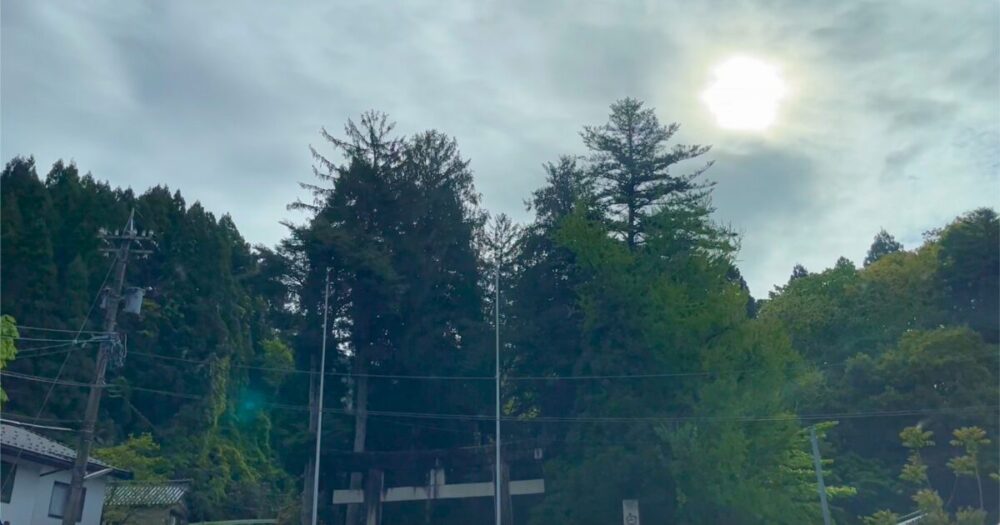During the Golden Week holiday, I had the opportunity to visit Ise Jingu, and I also decided to pay a visit to the Hakusan Hime Shrine in Ishikawa Prefecture, which has a historical connection to Ise Jingu. Have you ever heard of Hakusan Hime Shrine? This shrine, located in Kanazawa City, Ishikawa Prefecture, has been cherished by many for centuries. In this article, I will explore the mysteries of Hakusan Hime Shrine as I prepare for my pilgrimage to Ise Jingu.
For more information about Ise Jingu, click here.
The Origins of Hakusan Hime Shrine in Ishikawa Prefecture
Hakusan is a sacred mountain range spanning Ishikawa, Fukui, and Gifu Prefectures. It has been revered as a holy site since ancient times. For those living at its foothills and even for those who gaze upon its beautiful peaks from the plains, Hakusan is a sacred place providing “life water” essential for daily life. Over time, this reverence manifested in the form of mountain worship, and paths leading to the summit were established. The Hakusan Hime Shrine, located in the Kaga region (Ishikawa Prefecture), has a history of over 2100 years and serves as the head shrine for approximately 3000 Hakusan shrines nationwide, with the sacred peak of Hakusan being worshipped as the divine body.
Who is Enshrined at Hakusan Hime Shrine?
Among the many Hakusan shrines, Hakusan Hime Shrine stands out as the main shrine, enshrining the goddess Kukurihime no Mikoto, also known as Shirayamahime no Kami, who appears in the ancient Japanese chronicle ‘Nihon Shoki’. According to ‘Nihon Shoki’, when the world was newly divided, the heavenly realm, Takamagahara, was inhabited by many gods. Among them, the last to appear were the married deities Izanagi no Mikoto and Izanami no Mikoto, tasked with creating new lands and giving birth to the gods who would inhabit them. However, after giving birth to the fire god, Izanami no Mikoto died from her burns. Grieving, Izanagi no Mikoto went to the land of the dead, Yomi, to retrieve his wife, but fled upon seeing her decayed form. Enraged, Izanami no Mikoto pursued him. At this moment, Kukurihime no Mikoto intervened, mediating between the two deities, leading to the birth of other gods like Amaterasu Omikami, Tsukuyomi no Mikoto, and Susanoo no Mikoto. Hakusan Hime Shrine also enshrines Izanagi no Mikoto and Izanami no Mikoto, and Kukurihime no Mikoto is revered as the goddess of harmony and matchmaking.
The Allure of Hakusan Hime Shrine in Ishikawa Prefecture
Hakusan Hime Shrine exudes a sacred atmosphere. Interestingly, although it was drizzling until just before our arrival, the rain stopped and the sky cleared as we reached the shrine. Upon entering the shrine through the first torii gate near the parking lot, we were greeted by a moss-covered stone staircase lined with ancient cedar trees on the main approach. (There are two entrances: the main approach through the torii gate and the northern approach accessible by car. We entered through the main approach.) Along the way, we were surprised to see a sign warning of bears, highlighting the area’s pristine nature. The water source flowing from the mountain top nurtures the surrounding fields and lives. After the rain, the increased water flow created soothing sounds, complemented by birdsong, clean air, and the calming effect of nature. It was 8 AM, and a few other visitors were already there, showing the shrine’s local popularity. Near the summit, there is a purification fountain where you cleanse your hands and mouth before passing through the second and third torii gates to reach the top. The serene atmosphere, lush greenery, and birdsong create a tranquil environment. The shrine buildings and grounds are adorned with beautiful carvings and decorations, offering a sense of peace and purification in nature.

Conclusion
Hakusan Hime Shrine, located in Kanazawa City, Ishikawa Prefecture, symbolizes the reverence for Hakusan and gratitude for nature. Kukurihime no Mikoto, the main deity, is revered as the goddess of harmony and matchmaking. The shrine also enshrines Izanagi no Mikoto and Izanami no Mikoto. This sacred place, surrounded by nature, offers a unique opportunity for purification and spiritual connection. It’s a must-visit for anyone seeking to experience the divine and natural beauty of Japan.



